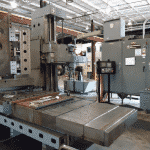Types of Variable Speed Drives
There are three general types of variable speed drives- DC Motor drives, Eddy Current Drives, and AC Motor drives.Each type of variable speed drive can be divided into different variations. Every variable speed drive system will include an electric motor and a speed control unit. Variable speed drive technology today mainly consists of solid state electronic components in a single system. Older variable speed drive systems used mechanical parts that over time, resulted in failure due to moving and worn parts.
DC Motor Drives
 DC drives are also known as DC Motor Speed Control Systems.The speed of a DC motor is directly proportional to armature voltage and inversely proportional to motor flux; either armature voltage or field current can be used to control the motor speed. DC Motors have become expensive and today most dc motor speed control systems have been retrofitted with an AC motor and AC variable speed drive. AC variable speed drives are less expensive than DC systems, are more available and are more efficient than DC systems.
DC drives are also known as DC Motor Speed Control Systems.The speed of a DC motor is directly proportional to armature voltage and inversely proportional to motor flux; either armature voltage or field current can be used to control the motor speed. DC Motors have become expensive and today most dc motor speed control systems have been retrofitted with an AC motor and AC variable speed drive. AC variable speed drives are less expensive than DC systems, are more available and are more efficient than DC systems.
Eddy Current Motor Drives
An eddy currentdrive consists of a fixed speed motor and an eddy current clutch. The clutch contains a fixed speed rotor and an adjustable speed rotor separated by a small air gap. A direct current in a field coil produces a magnetic field that determines thetorquetransmitted from the input to the output rotor. The controller provides closed loop speed regulation by varying the clutch current, allowing the clutch to transmit enough torque to operate at the desired speed. Speed feedback is provided by an integral AC tachometer.
Eddy current drives are less efficient than other types of drives.Nearly all eddy current motor drive systems are obsolete today. There are few manufacturing facilities across the globe that still use eddy current motor drive systems, and when the equipment fails, it’s expensive to repair and often impossible to replace.
AC Motor Drives
AC variable speed drives are also known as, VSDs, variable frequency drives, VFDs, inverters, adjustable speed drives, and micro drives. AC variable frequency drives are used in many applications such as swimming pool pumps, air compressors, conveyor belts, lathes, mills, food processing production lines, waste water treatment pumps, HVAC fans and blowers, and many more applications in the industrial manufacturing world. Approximately one third of the world’s electrical energy is supplied by electric motors in fixed-speed centrifugal pump, fan, and air compressor applications. This proves thatsignificant energy efficiency improvement opportunities are available in the industrial manufacturing world if older DC motor speed control systems and eddy current drive systems are retrofitted with AC variable frequency drive systems.
Conclusion
Most manufacturers currently seek to replace their eddy current and DC variable speed drive systems with AC variable speed drive systems. Today, technology has reduced AC variable speed drive systems’ cost, physical size, and has improved performance through advances in semiconductor switching devices, simulation, control techniques, and control hardware and software. Manufacturers across the globe capitalize on AC variable speed drive technology to save money on their power bill, increase quality control, decrease production downtime, and improve overall efficiency in production lines.






